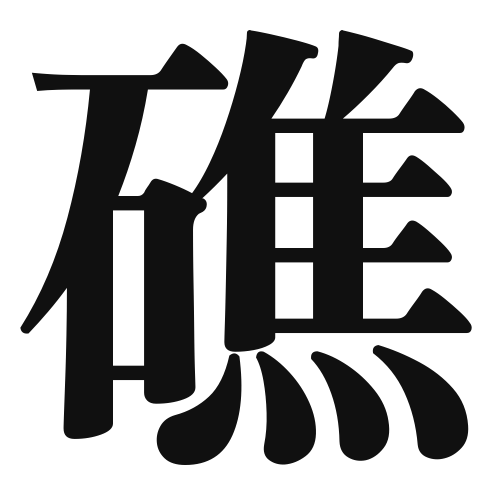1. Overview of Meaning
The kanji “礁” (shō) refers to a reef, particularly a rocky or coral formation in the ocean. It is often associated with shallow waters where marine life thrives and can pose a hazard to navigation.
2. Formation and Radical
Formation of the Kanji: The kanji “礁” is a phonetic-ideographic character (形声文字). It combines the meaning of “stone” (石) with a phonetic component that suggests its pronunciation.
Radical: The radical of “礁” is “石” (ishi), which means “stone” or “rock.” This radical is commonly found in kanji related to rocks and minerals.
3. Examples of Usage
Common Words and Phrases:
- 礁石 (shōseki) – reef rock
- 珊瑚礁 (sangoshō) – coral reef
Example Sentence in Daily Conversation:
「この近くには美しい珊瑚礁があります。」 (Kono chikaku ni wa utsukushii sangoshō ga arimasu.) – “There is a beautiful coral reef nearby.”
4. Synonyms and Antonyms
Similar Kanji:
- 岩 (iwa) – rock; refers to larger, solid formations compared to a reef.
- 礫 (raku) – gravel; smaller stones, often found on beaches or riverbeds.
Antonyms:
- 深海 (shinkai) – deep sea; refers to the deep parts of the ocean, contrasting with the shallow areas of a reef.
5. Cultural and Historical Background
Relation to Japanese Culture: The concept of reefs is significant in Japan, an island nation surrounded by the sea. Reefs are vital for fishing and marine biodiversity, which are important aspects of Japanese culture and cuisine.
Proverbs and Idioms: While there may not be specific proverbs directly referencing “礁,” the sea and its features often appear in Japanese literature and sayings, reflecting the deep connection between the Japanese people and the ocean.
